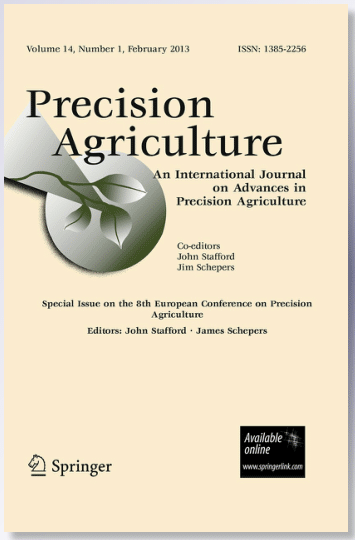On-farm experiments (OFE) typically do not account for limitations of grain yield monitors such as the dynamics of grain flow through a large combine. A common question asked within OFE is how ground speed impacts yield estimates from grain yield monitors. Therefore, the objective of this study was to determine if combine ground speed influences the ability of grain yield monitors to report yield differences for OFE. Six sub-plot treatment resolutions that differed in length (7.6, 15.2, 30.5, 61.0, 121.9, and 243.8 m) of imposed yield variation were harvested at combine ground speeds of 3.2 and 6.4 km h−1. Treatments were replicated 3 times. The intentional yield variability in maize (Zea mays L.) was created by alternating nitrogen application (0–202 kg N ha−1) across the treatment lengths. A factory installed yield monitor (YM3) and a third-party platform (P1) using the controller area network (CAN) bus data were used to collect yield data and compared to plot combine data collected from adjacent rows for each treatment length along a pass. Comparisons were made between each YM and plot combine yield estimates for each low and high yield treatment lengths. Combine ground speed did not significantly impact yield estimates (p ≥ 0.31 for all speed interactions) except speed * method due to lack of calibration. There were no significant differences the computed yield differences (all speed interactions p ≥ 0.40). Combine ground speed did not significantly influence the ability of yield monitoring technologies (i.e. mass flow sensor) to estimate the average low and high yields (p ≥ 0.31 for all speed interactions for individual plot lengths except when operating outside the calibrated flow range of the mass flow sensor. Operating outside the calibrated flow range of the mass flow sensor resulted in mass flow rate being overestimated by an average of 23% for both yield monitors (YM3 and P1).


